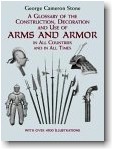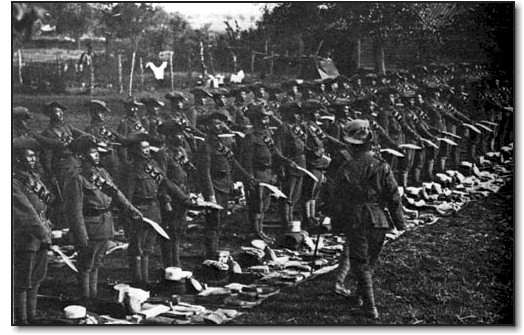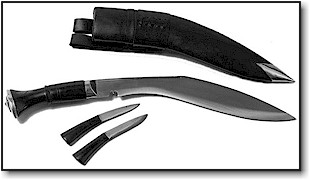|
|||||||
0705 Nepal’s “Peacemaker”
“The national knife and principal weapon of the Gurkas of Nepal. It has a heavy, curved, single-edged blade sharp on the concave side. The hilt is usually straight and without a guard; occasionally it has a disk guard and pommel like the sword (kura) from the same region. It is carried in a leather sheath with two small knives and a leather pouch. The small knives are shaped like the kukri, though one is often without an edge and is said to have been used for a sharpener. Quite often one, or both, of these knives have hilts of branching staghorn. "
More than 100,000 Gurkhas served in the First World War. A similar number served in the Second World War, when Nepal volunteered 20 extra battalions after France fell and Britain was vulnerable. After Indian independence, four of ten regiments in the Gurkha Brigade transferred to the British Army, the rest to the Indian Army. Since 1947 they have defended British interests in Malaya, Borneo and Cyprus. The Victoria Cross has been awarded to Gurkhas 26 times.
The curve of the Kukri's blade is very important because no matter what part of the blade makes contact with a target, the edge is always presented at an angle. This deep forwars curve creates a shearing motion, so that the edge slices through the target as the weight of the blade drives it deeper.
The
weight of the blade of the kukri is well towards the
point and a tremendous The scabbards are often embroidered with quills or decorated with silver or gold chapes.” The only decoration likely to be found on one is a small pair of notches on the blade near the hilt. The origin of these notches is a matter of some debate. Some authorities describe them briefly as meaning "divinity, " their origin reflecting the kukri's status as a religious symbol. The term 'choil' is often used to describe the terminus of the sharpened edge...but the interesting symbolism applied to this feature on the kukri uses another term as well. It is believed that this curious shaped notch with a central pillar represents the female generative organ of Kali, the Hindu goddess of destruction...and is called the 'yoni'. This symbolism is discussed in Rawson, "The Indian Sword" (p.54 and p.89,note 80.) Conversely, Byron Farwell, author of "Gurkhas" states he was told by Maj. Gen. Palit of the 9th Gurkhas that the kukri was a macho weapon, and the traditional choil represented a phallic symbol. Erotic metaphor is not unusual in India, but conclusions seem a matter of perception. In any case, the earliest known kukri dates from c.1627, belonging to the King of Gurkhas, and is of essentially same form, with the same distinctive choil. The kukri is accompanied by a pair of small utility knifes in its sheath. These are not weapons as such, and are not capable of being thrown.
|
|||||||
|
 The
following description of the kukri, also spelled
cookri or kookeri, is taken from the must-have Arms
textbook known generally by its short title - "Stones
Glossary" - A Glossary of the
Construction, Decoration and Use of Arms and Armour
in All Countries and in All Times Together with Some
Closely Related Subjects by George Cameron
Stone, first published in 1934.
The
following description of the kukri, also spelled
cookri or kookeri, is taken from the must-have Arms
textbook known generally by its short title - "Stones
Glossary" - A Glossary of the
Construction, Decoration and Use of Arms and Armour
in All Countries and in All Times Together with Some
Closely Related Subjects by George Cameron
Stone, first published in 1934.
 blow can be struck with it with very little muscular
exertion. There are well-authenticated instances of
a Gurka having split the head of a man and cut well
down into his chest with a single blow. It is
carried by the Gurkas at all times and is used as a
jungle and hunting knife as well as for war. It is
equally effective for skinning game as for chopping
wood
blow can be struck with it with very little muscular
exertion. There are well-authenticated instances of
a Gurka having split the head of a man and cut well
down into his chest with a single blow. It is
carried by the Gurkas at all times and is used as a
jungle and hunting knife as well as for war. It is
equally effective for skinning game as for chopping
wood